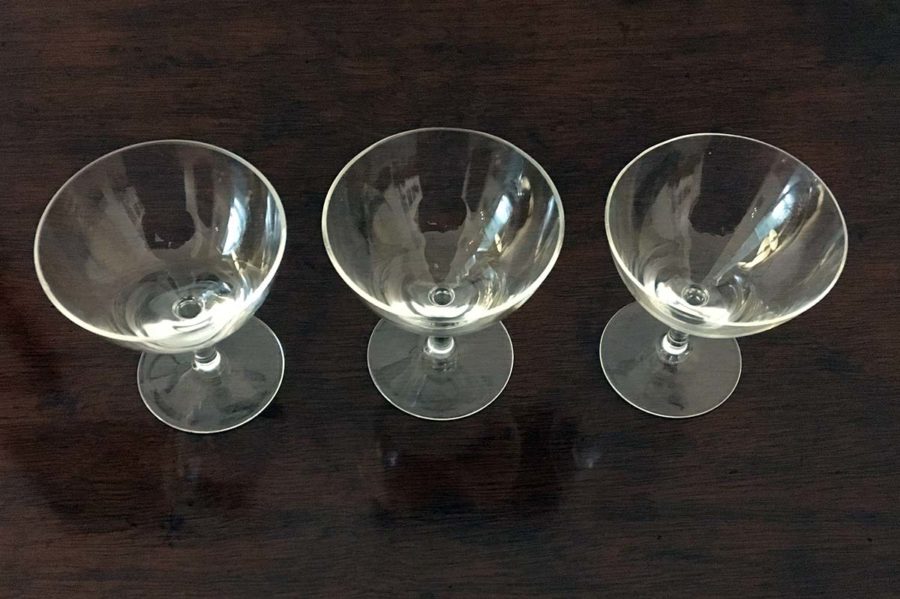9th April 2018 Vienna, Austria
#ViennaMemories #6: three slow glasses

The three liqueur glasses are sub-standard in every way. Each is slightly different from the other. The thickness and shape of the glass curves are irregular. Two are chipped.
I treasure them.

The three tiny liqueur glasses I bought second-hand in Vienna in 1986 are another #ViennaMemories item rich with history. I have used them rarely: not everyone likes chipped glasses, and they are too small for anything other than symbolic quantities of liquid. But their idiosyncratic style and delicacy make them unusual objects.
The fact that they are small has also made them easier to transport from country to country over the years than larger vessels.
The three glasses are at once delicate, yet with the potential to endure for centuries. I am always struck by how mechanical washing-up degrades objects – it is like multiplying the number of times you use each object by a thousand. I have owned the glasses 30 years. I like to think that, by washing each glass by hand every time I use them I could, with care, ensure they lasted forever.
Or at least long enough to see me out.
The fact that the glasses are made of a single substance and are pre-owned is reminiscent of the 1972 BBC ghost story, “The Stone Tape”, which made such an impression on me as a teenager that I still remember some scenes. In the story, the stones of an old building act as a recording medium for past, haunting, events. Worth a look.
The concept of an object or substance soaking up and replaying events is also reminiscent of the 1966 science fiction short story “Light of Other Days”, set in Scotland, by Northern Irish writer Bob Shaw. This introduced the idea of “slow glass” through which light takes years to pass. The Wikipedia entry notes that “it tends to make people weep”. It begins “Leaving the village behind, we followed the heady sweeps of the road up into a land of slow glass.” I recommend it.
What events did my three slow glasses experience? Did they once sit on the shelf of a bourgeois family, perhaps as part of a larger set? Or did a refugee salvage them – or sell them – at a time of crisis? Where were they at the time of the Anschluss, or when the Austrian State Treaty was signed in 1955? We’ll never know much of Europe’s turbulent 20th century history they may have witnessed before they started their journey with me: they hold their secrets silently. For me, they make an evocative link to my first posting in Vienna from 1984-87.
Robin – I suspected as much! Behind every page of good sci-fi is concealed a kernel of science fact. Glad you enjoyed the blog, and see you soon indeed.
Leigh
Dear Leigh,
There is perfectly respectable physics that says everyone who touched those glasses left something of themselves within the atomic structure: displaced atoms or just contributed to the vibrations. Sadly we cannot interpret the detail. It is lost in the complexity of influence. But the idea appeals to me nonetheless.
See you soon.
Robin